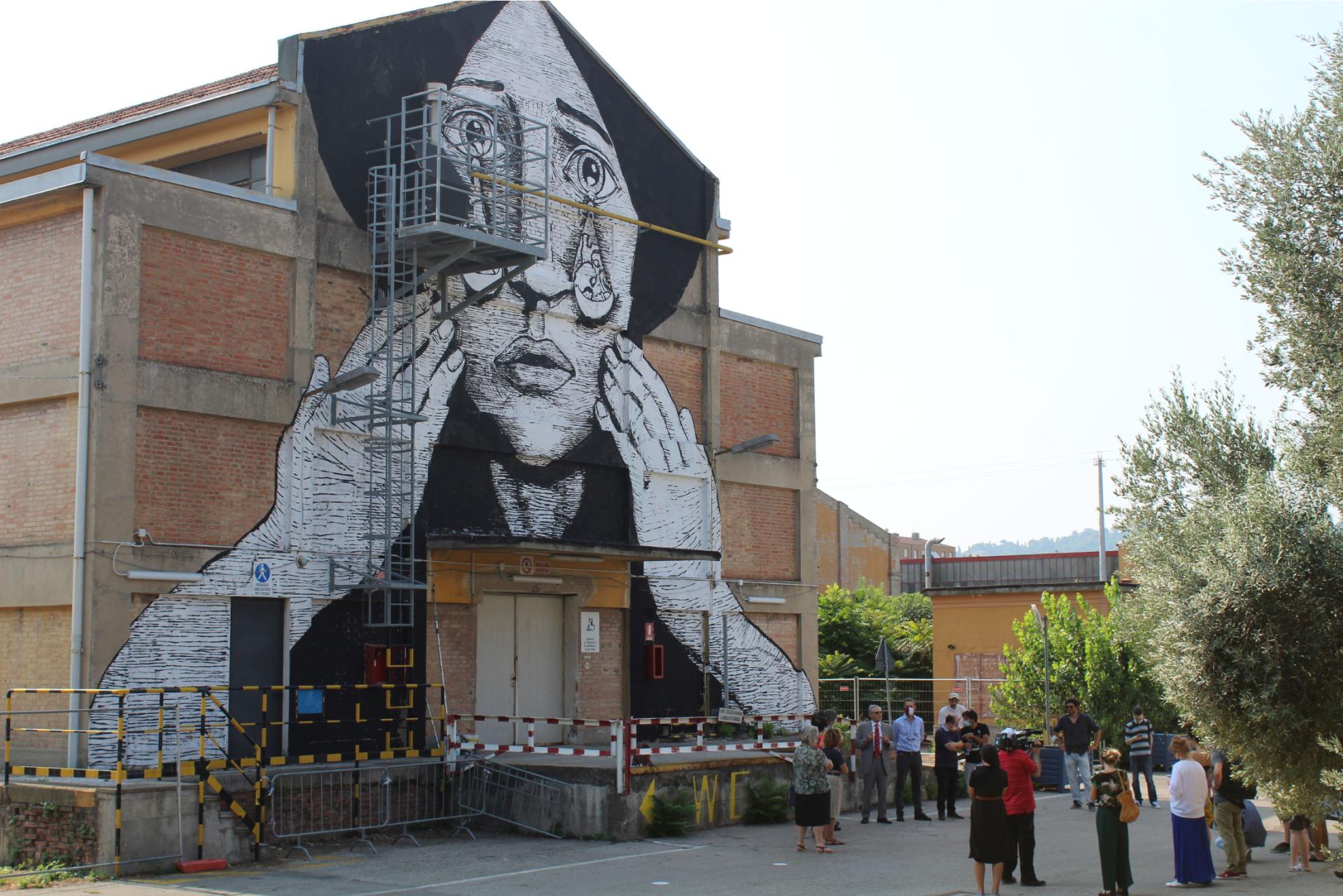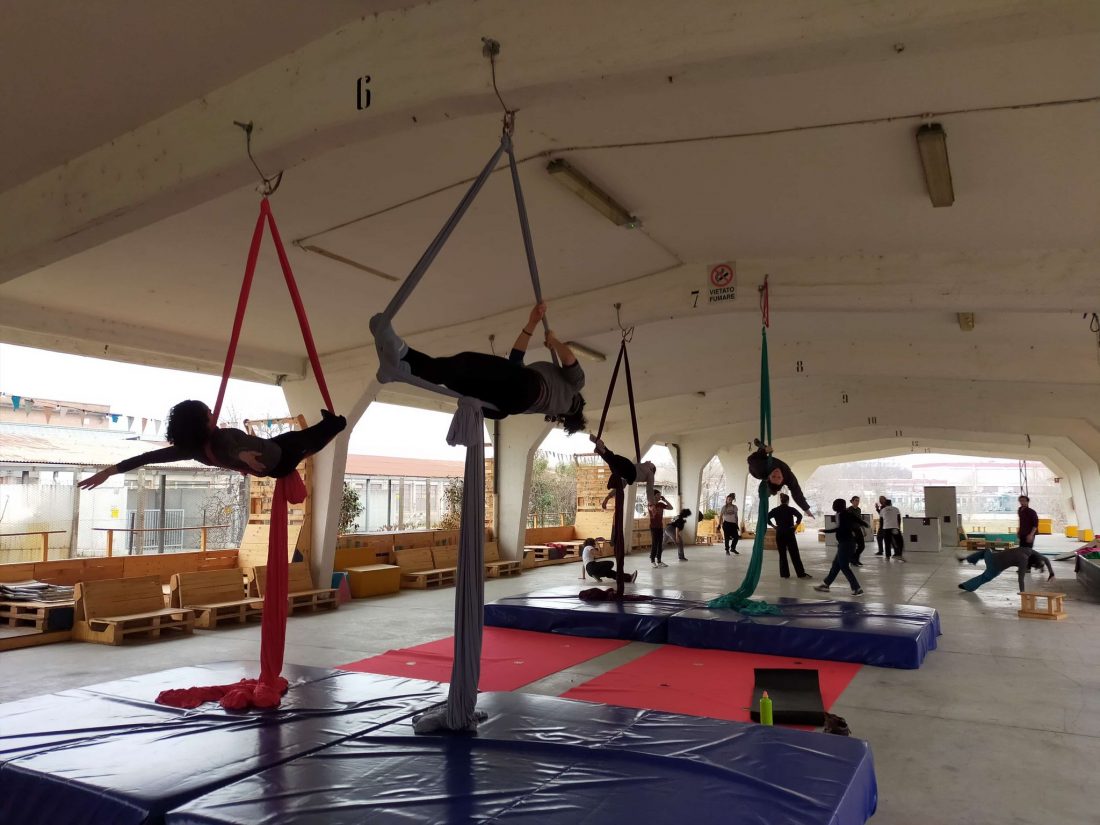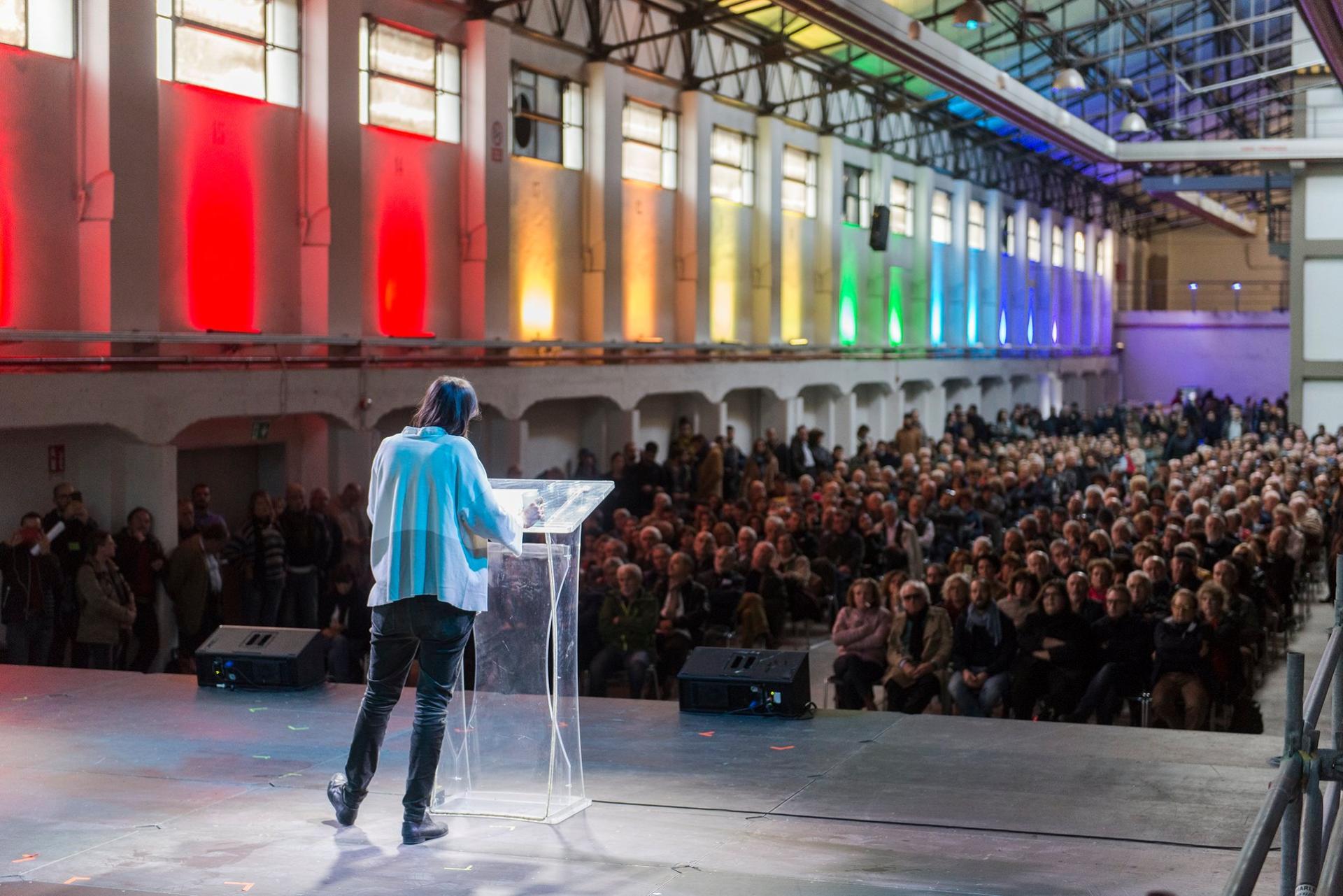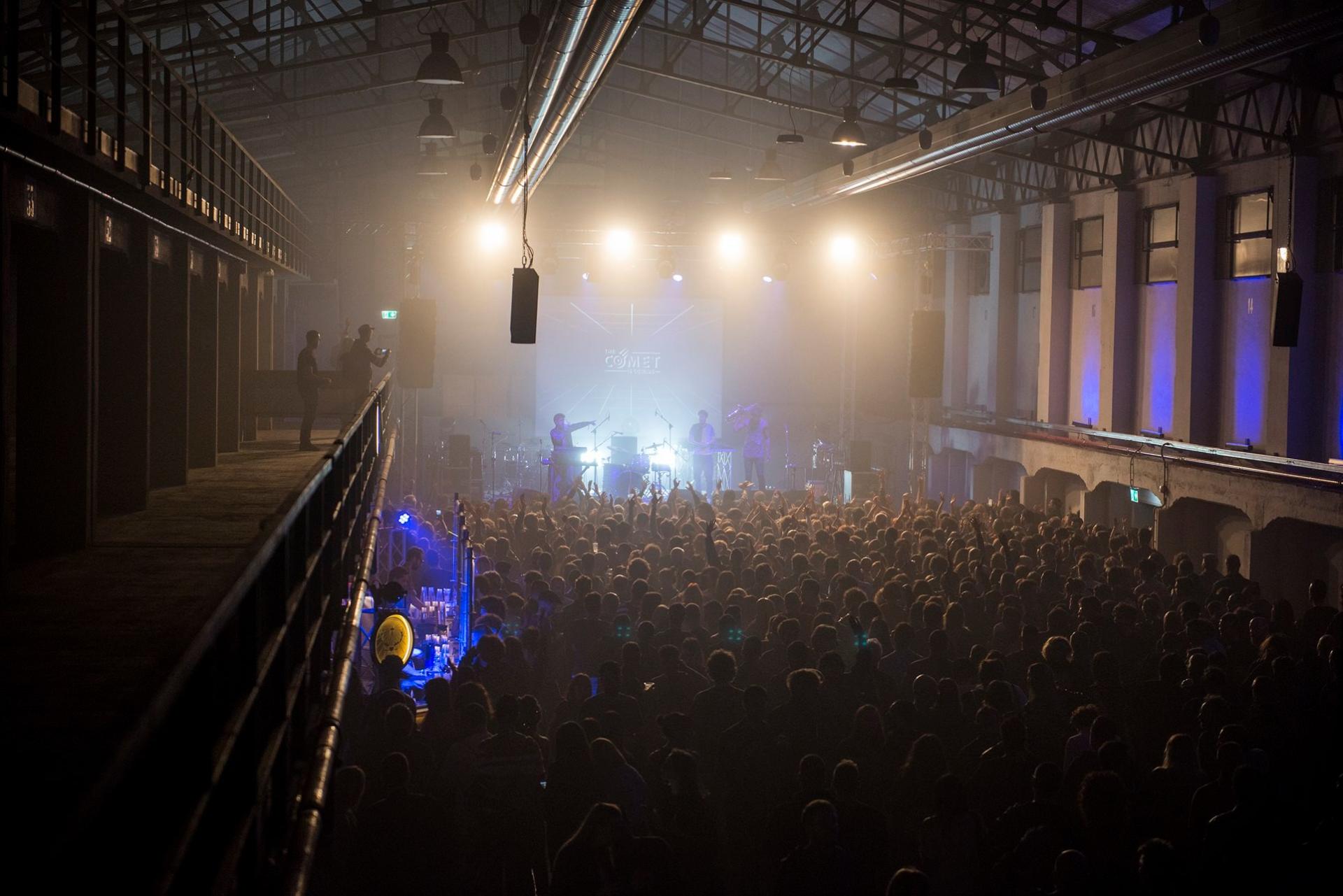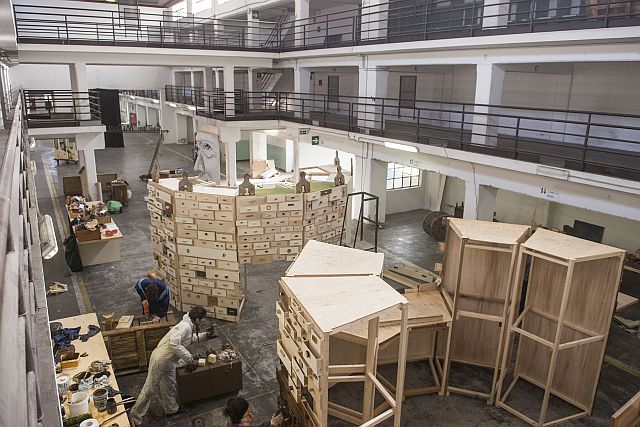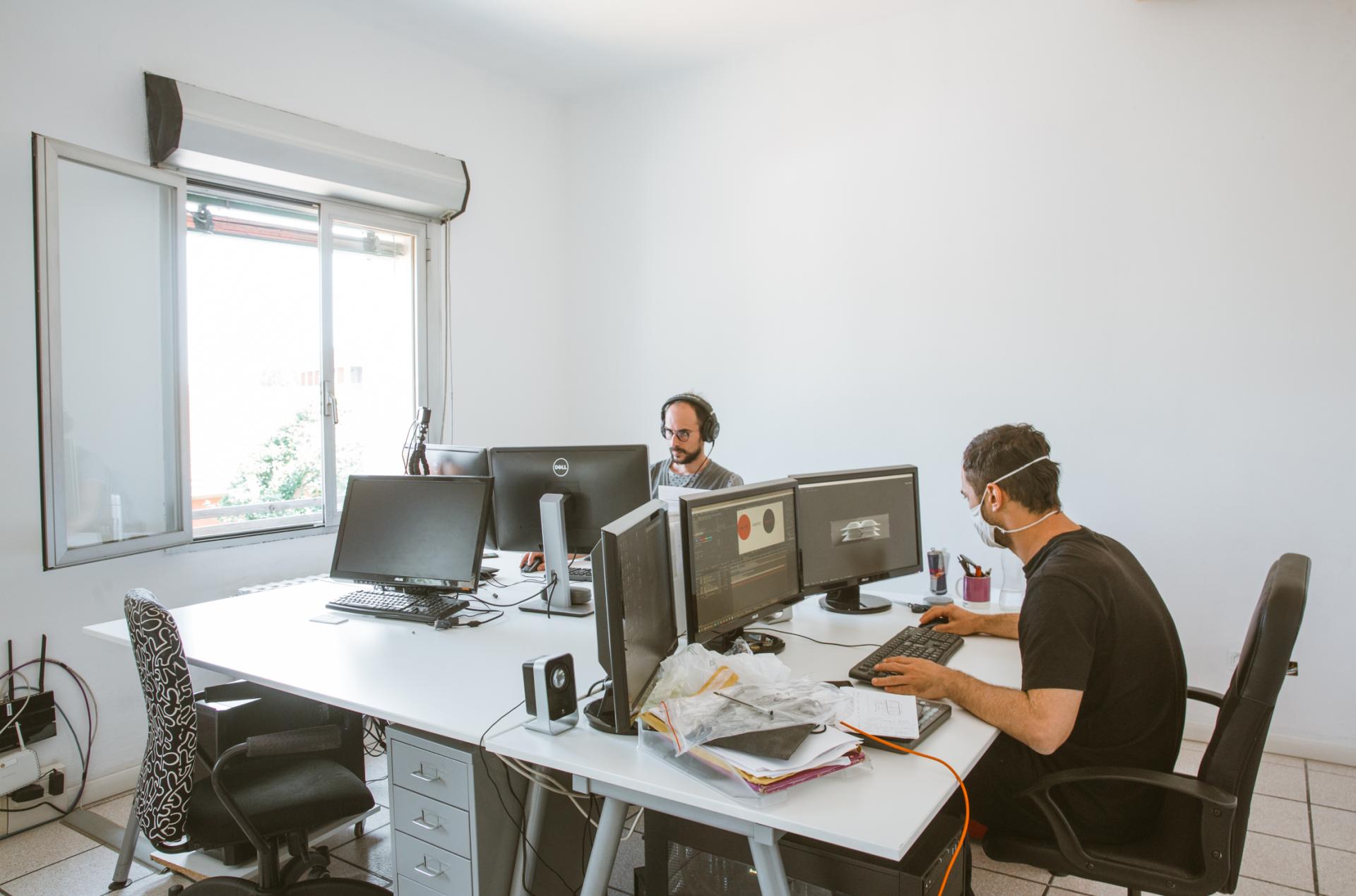Ravone Open Building Site
Basic information
Project Title
Full project title
Category
Project Description
The pilot-experience of the Dumbo Space, launched in Bologna in 2019, constitutes the temporary use project for part of the warehouses and open areas that compose the main freight yard of the city, which has been abandoned for decades. The project is considered particularly significant and strategic due to its unique size and complexity on the national scene, where the regeneration of the disused heritage, established as a "common good", becomes the trigger for the implementation planning.
Project Region
EU Programme or fund
Description of the project
Summary
The regeneration project of the Ravone area, a former freight yard in Bologna, was born on the ashes of a complex and ambitious urban project which would have provided for its urbanization and whose feasibility has not been guaranteed by a persistent economic and financial crisis. The failure of conventional land management tools opens the opportunity to re-establish an experimental virtuous mechanism which translates the vertical administrative system into a principle of horizontal subsidiarity. Following selection by public tender, the Ravone area, owned by the Italian railway transportation company FS Sistemi Urbani, is granted for use and management for a period of 4 years (renewable) to a local cooperative. The temporary uses, placing itself in the vacation state between the phase of abandonment and the expectation of new conditions of valorization, offer the opportunity for a real experimentation revealing the opportunities of the area and providing an understanding of local ideas by those new subjects capable of claiming a civic role in the process of city construction. The project contributes to the enhancement of the area with specific social, cultural, sustainable and economic policies. Social, as it activates practices of urban regeneration which involve the subjects most penalized by the current situation, i.e. young people and the weakest categories, creating the conditions to best express their talent and energy. Cultural, since it promotes alternative practices to the current ones, although complementary, by creating an urban scene that recognizes and promotes new wills and expectations. Sustainable, as it encourages the reuse of the existing heritage, recognizing its high architectural value and avoiding the expansion of new urbanized land. Economic, as it favors the immediate use of existing building structures with a low initial investment, representing the trigger for the area future development and overcoming the stasis generated by the crisis.
Key objectives for sustainability
The Ravone area, consisting of 325.000 square meters, is the subject of a territorial agreement which would have provided for its total urbanization and for the demolition of the existing industrial buildings, whose structural and system facilities are still efficient. The forecasts, in compliance with the rules inherited from the pre-crisis seasons of the urban project, allow the construction of a new highly-dense mixed-use district of around 150.000 square meters total surface, whose feasibility has not been guaranteed by a condition of crisis. Facing the current economic and ecological directions, the project aims, firstly, at a drastic reduction of the quantitative forecasts in order to not further jeopardize an already weak market, secondly, to dilute over time the estimated impact and, thirdly, to preserve the value of existing but unused settlements, recognizing their good state of maintenance, high flexibility and immediate availability. The reuse of the existing warehouses, mobilizing a dynamic multitude of different actors for cultural, social and entrepreneurial purposes, demonstrates how the biggest change passes through an interesting process of administrative innovation, experimentation of procedures and upgrading of policies that see recycling initiatives as the strategy of survival both from the economic crisis and the awareness of the environmental emergency. The project therefore supports and represents a model of urban and territorial transformation based on the local capacity to guarantee development processes consistent with the principles of sustainability, preferring the recovery of the existing urban fabric compared to new expansions on the territory. This is, for the city of Bologna, a substantial change that provides for a cultural renewal addressed to a more innovative land use policy, capable of slowing down the expansion of urbanized land and directing the interests of real estate sectors towards urban regeneration.
Key objectives for aesthetics and quality
The project aims at reactivating the existing industrial heritage of the Ravone area which is composed of ten warehouses built between the twenties and seventies of the last century. The architecture of the buildings based its typology on a simple gable structure from which every single warehouse represents a unique and interesting variation. The prototypical value of the existing spaces gives the opportunity to imagine some functional, formal and figurative aspects in order to potentially host the coexistence of different populations and types of activities with a high degree of internal flexibility. The re-use action is then oriented, in the initial stages, to an incremental transformation of the space, adapting the environments to minimum functionality always subject to continuous revisions. The architectural interventions are then light, sometimes almost invisible, keeping the identity of the place strong and allowing the sense of the old structures to be grasped. This aspect is essential to test the opportunities offered by temporary practices beyond the conventional urban planning procedures, breaking the mono-functionalism that characterizes previous uses. The reconquest of the area by the city becomes a unique opportunity to develop a second stage of interventions on the spaces, both from the point of formal than conceptual view. Ravone Open Building Site becomes the title of the manifesto through which the warehouses become studios where to host the staging of the relationship between "doing" and "know-how" in the contemporary city. Through several adaptive reuse interventions, the former freight yard allows us to reflect on the economic, social, cultural and political renewal of the city, establishing a "circular" relationship between education, prototyping, production and consumption. In this perspective, the city in transition represents the prerequisite to assume a strong experimental connotation, embodying a place of radical innovation.
Key objectives for inclusion
The re-use of abandoned buildings, due to the crisis in the real estate sector, generates a new demand to which the ordinary building market and the current planning instrument cannot respond, unable to recognize the emergence of new subjects who reclaim procedures appropriate to their expectations. The speed of change promoted by the temporary use project, instead, offers the city a new way of using space, assuming a dynamic management where various actors are mobilized and networked. This is possible through an incremental process whose phases have the task of guaranteeing the construction of relationships between all those subjects who want to claim a role in the abandoned heritage. The material aspects (the spaces) and the immaterial ones (the value of the subjects) are therefore strongly integrated. The project is consciously characterized by the desire to increase publicity, to favor the size and public use of all the colonized places. In this sense, it means the "social" not only and perhaps not above all in the object of the activities but in the form and mode of space production, that is, in the affirmation of organizational models founded on sharing, co-production, co-creation, often based on the dismantling of the logic underlying the traditional relationship between operator and user. Empowering a collaborative practice of space action means to contribute to build a solid community, a challenge that, thanks to the direction of the Municipality of Bologna, makes use of the competences of the Urban Innovation Foundation which supports the co-planning phase with citizens, associations and entrepreneurial realities that want to contribute to inhabit and re-active the space. Because of its strong experimental connotation, open to the territory and civic participation, the project is, in fact, coordinated by a special Scientific Committee with advisory powers, whose work consists, in particular, in supporting the method and path of co-designing activities.
Results in relation to category
Facing the announced end of resources and a demand for change, the urban regeneration project for the Ravone area in Bologna assumes a sort of ethical statute which calls for a new idea of the city, in dialogue with the new economic and ecological directions. The intervention is, in fact, based on the peculiarities of the given conditions (place-based) and on the coordination of diverse interests so that each phase of the project articulation activates a multiplicity of actors, whose different capacities and purposes contribute to the common goal. The construction of a new district in which the experimentation takes place at different levels (urban, social, cultural, entrepreneurial) affects not only the local scale of the neighborhood which the former freight-yard belongs to but also the dynamic of the city and its regional context. Before the regeneration process, the abandoned area, even if located one kilometer from the city center and the main railway station, constituted a wide urban "gap", isolated from the street side by high walls and fences, which inevitably affected the urban quality of the surrounding district. The centrality of the area as well as the uniqueness of its urban morphology reveal to be strategic factors that determine today its high value. Firstly, at a local scale, the project contributes to create a new urban device representing a stable presidium and an infrastructural network that supports the lack of public spaces and services of the near densely populated neighborhood, known for occasional episodes of petty crimes. Secondly, the project affects an extended city dimension, entrusting differentiated parts of the space to initiatives of variable content, becoming the trigger for the future implementation planning of the area. Thirdly, the reactivation of the former freight yard represents a pilot project, for complexity and size, which feeds the national debates on temporary uses from a practice, procedural and disciplinary perspective.
How Citizens benefit
In the first year of its life, the temporary reuse project has hosted 10.000 participants for cultural purpose (art, music, cinema, theater, performing arts); 4.000 participants in job and education-related activities (students-enterprises meeting, labor union assemblies, start-ups presentations, co-working initiatives, laboratories and academic courses); 3.000 participants in sustainable pursuit (e-mobility storage and supply, events on the reuse culture, workshops related to recycling and urban regeneration); 2.500 participants for institutional purposes (political meetings, regional conventions, self-financing events); 1.000 participants for indoor and outdoor sport activities. The project has, then, activated relations with around 65 companies and associations. Within this fertile ecosystem and beyond the punctual benefit of the various events, the political-cultural vision that accompanies the area transformation welcomes the possibility of experimenting and supporting new forms of mutualism and collaborative economy. It is about creating an urban workshop for new emerging positions, conceived as an innovative and integrated supply chain dedicated to the needs of contemporary work. The model, called Bologna Attiva, aims at facilitating and supporting new forms of cooperative enterprise, professional integration and social inclusion by offering professional accompaniment, working spaces and shared professionalization tools within an urban intervention with unprecedented characteristics. The political-cultural vision for the sector then translates itself into a human regeneration project, in which public, private and community sectors can share mutualistic and self-protection tools for a more sustainable city. The creation of the Bologna Attiva platform responds not only to the territory's needs, seizing the opportunities, but activates a great variety of processes which produce undoubtedly medium-long term effects that go further than its temporary statement.
Innovative character
The first innovative character of the project is its repercussions at a regulatory level: if the reclamation of abandoned spaces takes place for the most part through spontaneous and informal processes, the reactivation process of the Ravone former freight yard has been legitimized ex-post by the regulatory apparatus, which has recognized its innovative value. This is a considerable result in terms of a relationship between the project and the planning instrument, as for the first time an exploratory and experimental practice claims the responsibility of subjecting the legislative framework to a design verification. In this sense, the regenerative process does not set itself in antagonism to conventional planning, but becomes the triggering phase of a process of transformation of the territory that involves new modes of action. The success of the initiative is demonstrated also by the possibility, offered by the Municipality, of continuing temporary uses beyond the limitation of their negotiated duration, nominating the intervention for a national founding tender. If successfull, the results of the regenerative process could migrate to the phase of the Implementation Plan, constituting an unprecedented event within the Italian urban planning. The second innovative character of the project is the ambition, promoted by the designers, to constantly activate the competences of the different subjects / inhabitants and the specificities / vocations of the place, giving importance to the interdisciplinary nature of the professionals involved and to the extraordinary inter-sectoral governance of these paths that see public and private, individual and collective, economic and non-profit subjects collaborate and mediate for the success of the intervention. The indispensable condition for the start of the area enhancement process has been, in fact, represented by the significant presence of an active citizenship and a social capital who have promoted a “enterprising city”.

